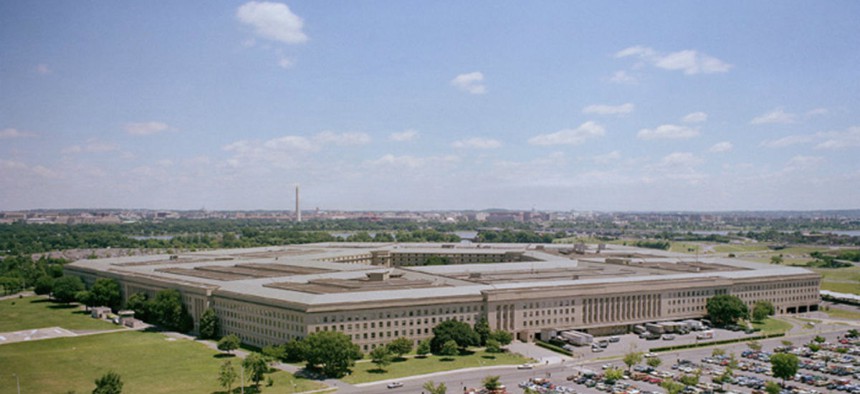
Defense Department file photo
Pentagon Moves Ahead With HQ Staff Cuts
Union says civilian employees will bear the brunt of "indiscriminate cuts."
With Congress and the White House still at loggerheads over the defense budget, Pentagon personnel strategists are proceeding with a more-severe version of an existing plan for cuts to headquarters staff—angering a major union in the process.
On Aug. 24, Deputy Defense Secretary Robert Work sent all military departments and services a memo titled “Cost Reduction Targets for Major Headquarters,” ordering preparation for a 25 percent cut in appropriations from 2017-2020 for all major Defense headquarters activities, the Office of the Defense Secretary, the Joint Staff, and the Defense agencies and field activities.
Work explained that he had received summaries of consultations with all departments by the deputy chief management officer seeking to establish a “comprehensive definition of major DoD headquarters activities.” As a result, his team now has an agreed-upon framework to “ensure [the cuts are] uniformly applied to headquarters elements throughout the department.”
The directive from Work suggests an impatience with indecision by Congress and the White House over the shared goal of reducing headquarters employees. The Defense budget submitted in February said the department “continues to rebalance internally to prioritize spending on combat power. Key ongoing activities include reducing the department’s major headquarters’ operating budgets by 20 percent.”
In its version of the fiscal 2016 National Defense Authorization Act passed in May, the House attached language to make those 20 percent cuts mandatory. The Senate version upped it to 30 percent over four years, and President Obama, citing a variety of reasons, threatened a veto.
Work’s August memo said he expects that Congress will require a 25 percent cut, but even if “Congress fails to act, the department needs the savings that will be achieved through this reduction to fund higher priority requirements in support of the warfighter and to address underfunded strategic needs.”
Components within Defense that have already embarked on cuts in response to a directive from previous Defense Secretary Chuck Hagel will be given credit. And “relief from this target may be granted based on evidence that an office or component took additional personnel reductions prior to the imposition of the 20 percent reduction requirement.”
The American Federation of Government Employees on Tuesday issued an angry statement, arguing that “by their nature, across-the-board staffing cuts are carried out indiscriminately, without regard to how vital work will continue to be performed with fewer staff. These cuts also focus on civilian employees, failing to address DoD’s far larger and costlier contractor workforce.”
The union also said the cuts “could serve as a terrible precedent for arbitrary cuts to the civilian workforce, which is the least costly of the department’s three workforces but the one that is already scheduled to be cut the most through 2019.”
Citing an Army plan to cut its civilian workforce by 30 percent at 30 installations, AFGE said that if the Pentagon needs to cut costs, it should consider what work tasks are no longer necessary, asking, “Who will perform the work when a fourth or more of the workforce is obliterated?”







